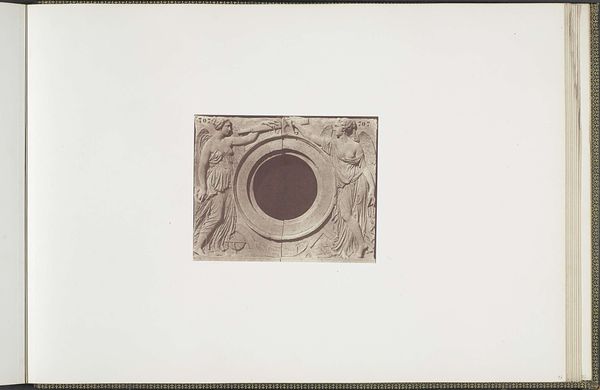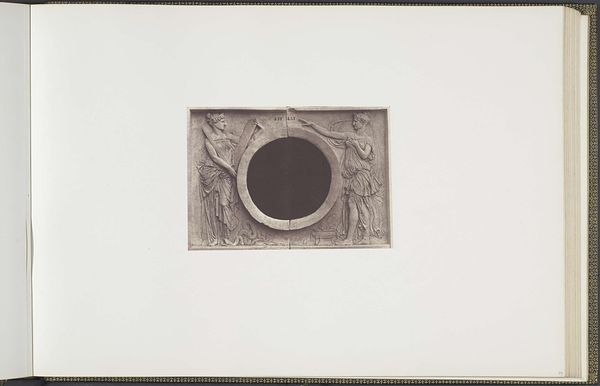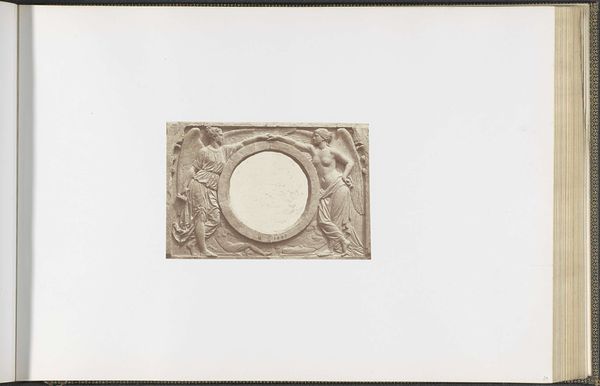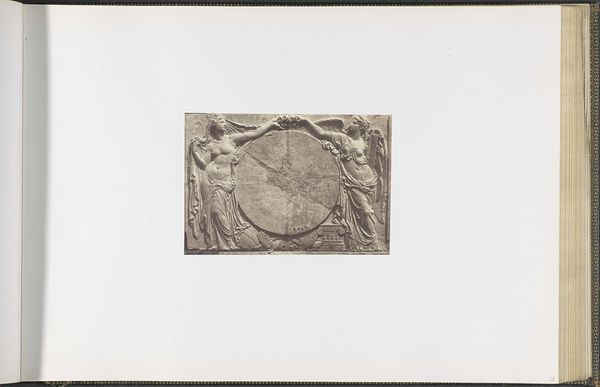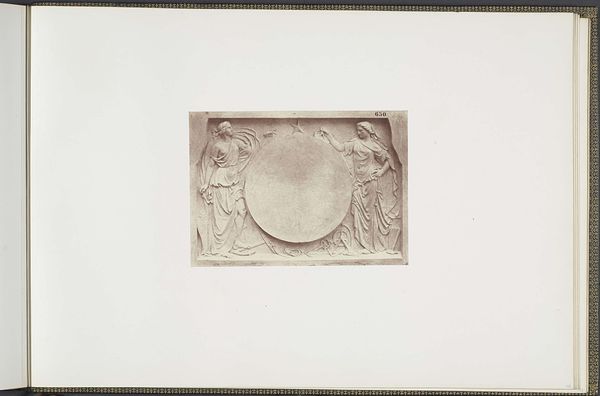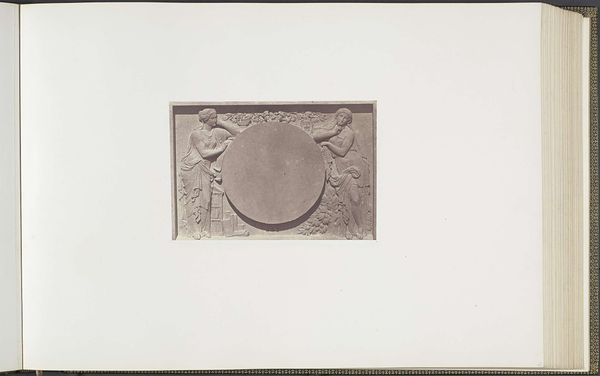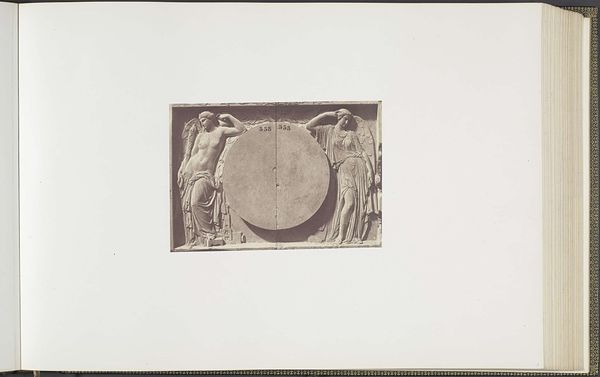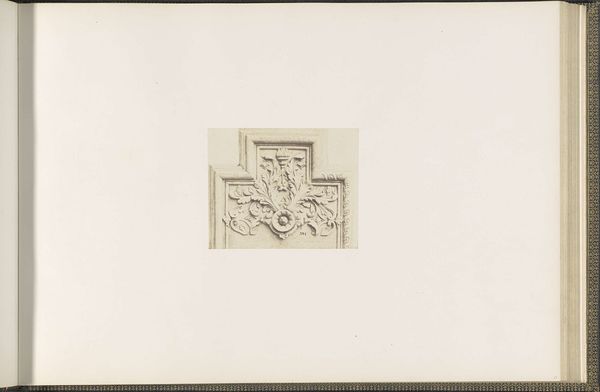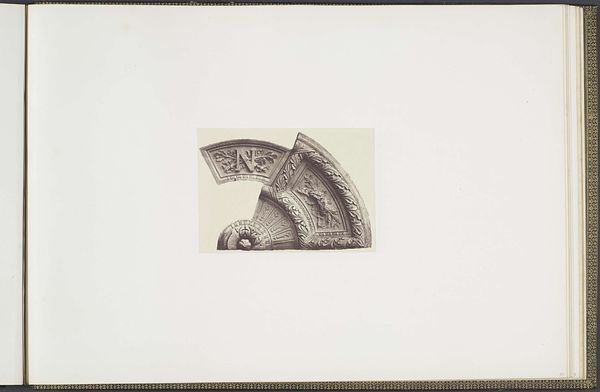
Gipsmodellen voor beeldhouwwerken op het Palais du Louvre: "La Poésie et la Philosophie" door Pierre Loison c. 1855 - 1857
0:00
0:00
edouardbaldus
Rijksmuseum
print, photography, sculpture
#
portrait
# print
#
photography
#
sculpture
#
history-painting
Dimensions: height 382 mm, width 560 mm
Copyright: Rijks Museum: Open Domain
Editor: So, here we have a photographic print from around 1855-1857 by Edouard Baldus, capturing Pierre Loison's plaster models for sculptures intended for the Louvre: "La Poésie et la Philosophie". It's stark in its presentation, almost clinical, but the composition is so balanced. What do you notice, looking at it through a Formalist lens? Curator: Initially, the geometry commands attention: the central void, a perfect circle, is anchored by the rectangular frame and further balanced by the symmetrical placement of the two figures. Note how Baldus exploits the tonal range of the print to differentiate between the plaster sculptures and the stark background. This accentuates the interplay of light and shadow on the sculpted forms. How does this arrangement affect your perception of the subject matter – Poetry and Philosophy? Editor: Well, the figures seem to be reaching towards this empty circle… almost like they're presenting it, or offering up their ideals to it. The negative space becomes really important; it's not just background. Curator: Precisely. Consider, too, the classical drapery and idealized forms. What statements might they be making about beauty and intellectual pursuit through these specific visual cues? How would it speak to viewers during this time period? Editor: They seem to be using established, recognized, forms to lend authority and permanence. I hadn’t really thought of how impactful that kind of visual language would be. Curator: The semiotic weight is quite substantial, yes. Now, consider the interplay of textures - the smooth plaster juxtaposed with the photographic print’s grain… The meticulous composition encourages close inspection of these visual characteristics above all else. What have we gained from exploring these artistic qualities? Editor: I see it less as just a document now, and more as a conscious arrangement of shapes, light, and shadow that conveys meaning through form, and not just content. Thanks for this new way of analyzing artworks!
Comments
No comments
Be the first to comment and join the conversation on the ultimate creative platform.

